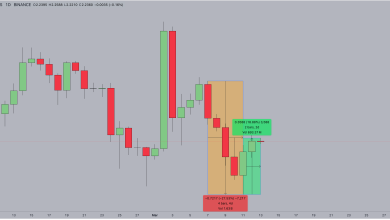Best Steps to Invest in Cryptocurrency

Cryptocurrency has revolutionized the world of finance, creating new opportunities for investors and reshaping traditional markets. From Bitcoin’s introduction in 2009 to the rise of thousands of altcoins, digital assets have become one of the most dynamic and rapidly evolving investment sectors. However, while the potential for profit is significant, the risks are equally high.
Therefore, understanding the right steps to invest in cryptocurrency is essential for anyone looking to enter this market wisely and safely. This article explores the best strategies and practical steps to start investing in cryptocurrency effectively.
1. Educate Yourself About Cryptocurrency
The first and most crucial step in cryptocurrency investment is education. Before investing a single dollar, it’s vital to understand what cryptocurrency is, how blockchain technology works, and the factors that influence the market. Cryptocurrencies are decentralized digital assets that rely on blockchain networks to record transactions securely and transparently.
Start by learning about the differences between popular coins like Bitcoin (BTC), Ethereum (ETH), and emerging altcoins such as Solana (SOL) or Cardano (ADA). Each has unique use cases, technologies, and risk profiles. Also, familiarize yourself with key concepts like wallets, exchanges, private keys, mining, staking, and decentralized finance (DeFi). The more you understand these fundamentals, the more confident and strategic your investment decisions will be.
2. Define Your Investment Goals
Before entering the market, clarify your investment objectives. Ask yourself what you aim to achieve: Do you want long-term growth, short-term trading profits, or portfolio diversification? Cryptocurrency investments can serve different purposes depending on your goals and risk tolerance.
For example, long-term investors—often called “HODLers”—buy and hold cryptocurrencies expecting substantial price appreciation over years. Short-term traders, on the other hand, use technical analysis to profit from market volatility. Defining your goals will help shape your investment plan and determine the types of cryptocurrencies you should focus on.
3. Assess Your Risk Tolerance
The crypto market is highly volatile, with prices sometimes changing by double digits within hours. Therefore, it’s crucial to assess your risk tolerance honestly. Never invest more money than you can afford to lose. Beginners should start small, using amounts they’re comfortable experimenting with while they learn the ropes.
One good strategy is to apply the “1% rule” — never allocate more than 1% of your total portfolio to a single cryptocurrency in the beginning. This approach limits potential losses while allowing you to gain valuable experience. above time, as you build confidence and understanding, you can gradually increase your exposure.
4. Choose a Reliable Cryptocurrency Exchange
To buy and sell cryptocurrencies, you’ll need a trustworthy exchange platform. Reputable exchanges like Binance, Coinbase, Kraken, or Bitstamp provide secure environments with high liquidity and user-friendly interfaces. When choosing an exchange, consider factors such as security measures, transaction fees, customer support, available cryptocurrencies, and ease of withdrawal.
Always enable two-factor authentication (2FA) and store only small amounts of crypto on exchanges. For larger holdings, consider transferring your assets to a secure wallet.
5. Use a Secure Wallet
A cryptocurrency wallet is essential for safeguarding your assets. There are two main types of wallets: hot wallets (connected to the internet) and cold wallets (offline). Hot wallets are convenient for frequent transactions but are more vulnerable to hacking. Cold wallets, such as hardware wallets like Ledger Nano X or Trezor, offer maximum security by keeping your private keys offline.
Never share your private key or recovery phrase with anyone. Losing access to these credentials means losing your crypto forever. Treat them like the password to your bank account — or even more carefully.
6. Diversify Your Portfolio
As with traditional investing, diversification is key to managing risk in cryptocurrency. Avoid putting all your money into a single coin, no matter how promising it seems. The crypto market can be unpredictable — even top coins can experience dramatic downturns.
A balanced portfolio might include a mix of well-established coins like Bitcoin and Ethereum, alongside smaller altcoins with strong fundamentals and growth potential. Additionally, consider investing in different sectors of the crypto ecosystem — such as DeFi, gaming, NFTs, and blockchain infrastructure — to spread your risk.
7. Develop a Clear Investment Strategy
Successful crypto investors follow a well-defined strategy instead of acting on emotions or market hype. Here are three popular strategies to consider:
-
HODLing: Buy and hold for the long term, ignoring short-term fluctuations.
-
Dollar-Cost Averaging (DCA): Invest a fixed amount regularly (e.g., weekly or monthly) regardless of market price.
-
Active Trading: Use short-term strategies such as swing trading or day trading to profit from price movements.
Whichever approach you choose, stay disciplined. Avoid emotional decisions driven by FOMO (fear of missing out) or panic during market dips. Consistency and patience are the cornerstones of profitable investing.
8. Stay Updated and Analyze the Market
The cryptocurrency market evolves rapidly, influenced by technological innovations, regulatory changes, and global economic events. Staying informed helps you make smarter investment choices. Follow reputable news sources like CoinDesk, CoinTelegraph, and Binance Academy. Join crypto communities on platforms like Reddit, Telegram, or X (formerly Twitter) to exchange insights with other investors.
Technical analysis (TA) and fundamental analysis (FA) are two essential tools for evaluating cryptocurrencies. TA focuses on price patterns and indicators, while FA examines project fundamentals such as team strength, technology, use cases, and partnerships. Combining both approaches can help you identify promising investment opportunities.
9. Beware of Scams and Fake Projects
The crypto industry’s openness also attracts scammers. Fake ICOs, pump-and-dump schemes, and phishing attacks are common. Always conduct thorough research before investing in a project. Verify the team’s background, read the whitepaper carefully, and check for transparent tokenomics and community engagement.
Be cautious of guaranteed returns — no legitimate crypto project promises risk-free profits. Remember: if it sounds too good to be true, it probably is.
10. Plan for Taxes and Regulations
Cryptocurrency investments are subject to taxation in most countries. Profits from trading, staking, or mining are typically considered taxable income or capital gains. Keep accurate records of your transactions to simplify tax reporting.
Also, stay informed about local regulations. Some governments restrict or ban crypto trading, while others embrace it with clear guidelines. Understanding the legal landscape ensures you remain compliant and avoid potential penalties.
11. Think Long-Term
While quick profits may seem attractive, the real potential of cryptocurrency lies in long-term adoption. Blockchain technology is transforming industries like finance, healthcare, and logistics. via investing with a long-term perspective, you align yourself with the growing evolution of decentralized systems.
Market corrections and crashes are inevitable. Successful investors see them as opportunities to buy quality assets at discounted prices rather than reasons to panic. Patience, research, and strategic planning are key to sustainable success.
Conclusion
Investing in cryptocurrency can be rewarding, but it requires knowledge, discipline, and caution. The best investors don’t chase hype — they study trends, diversify intelligently, and stay focused on long-term goals. Start by educating yourself, setting clear objectives, and securing your assets properly. Combine that with continuous learning and smart risk management, and you’ll be well on your way to building a profitable and resilient cryptocurrency portfolio.
Remember, cryptocurrency is not a get-rich-quick scheme. It’s a transformative financial revolution — one that rewards those who approach it with patience, strategy, and a willingness to learn.







